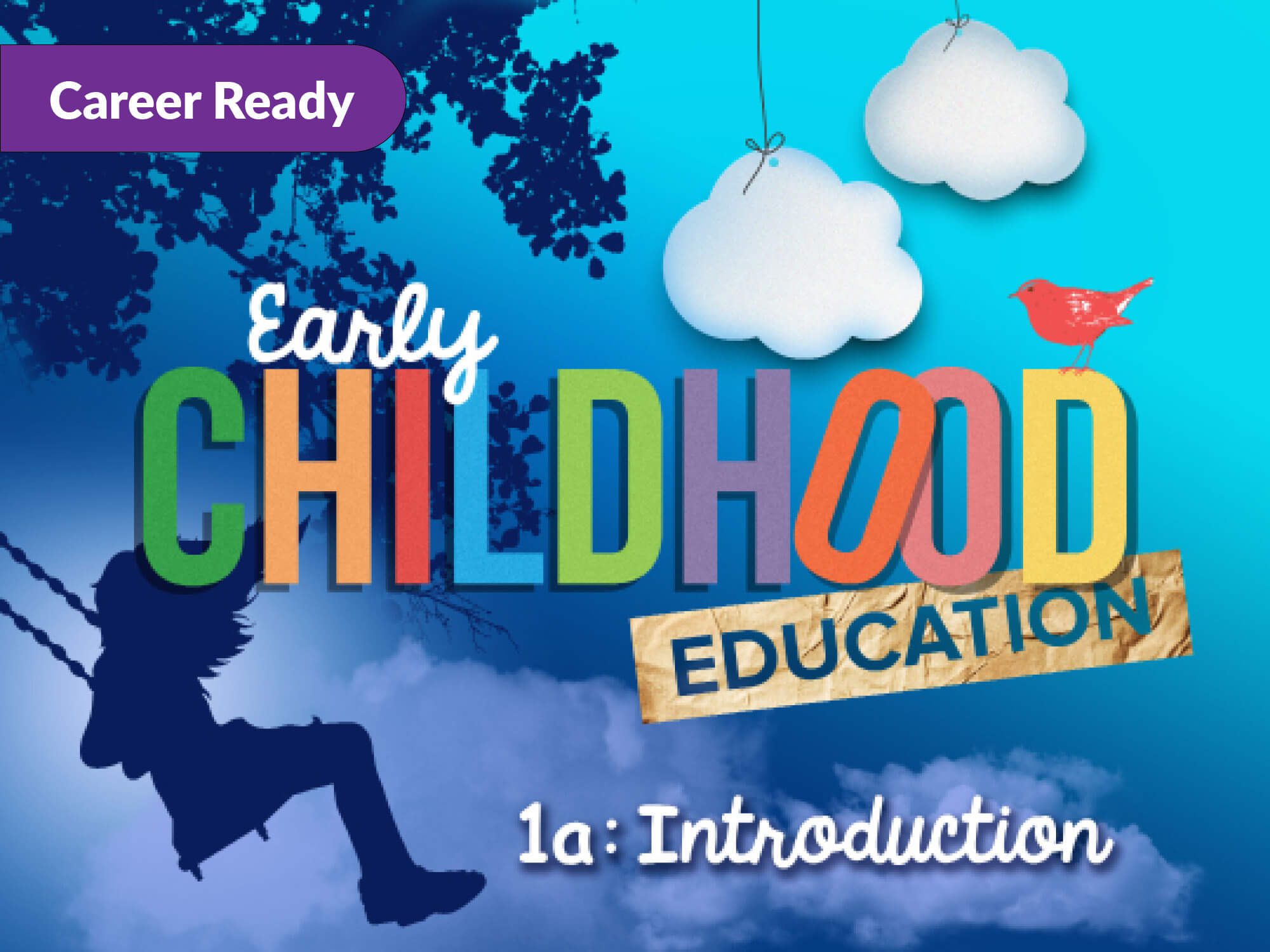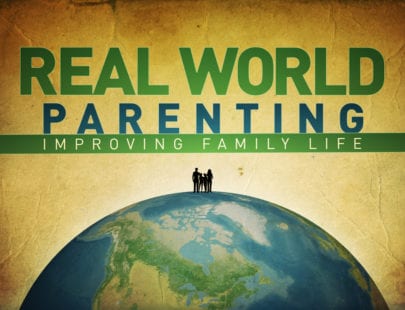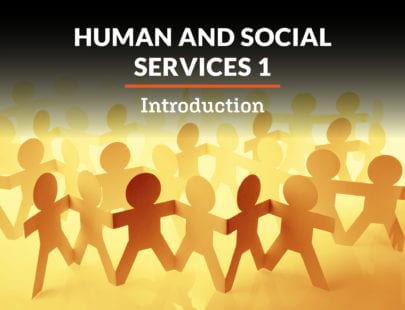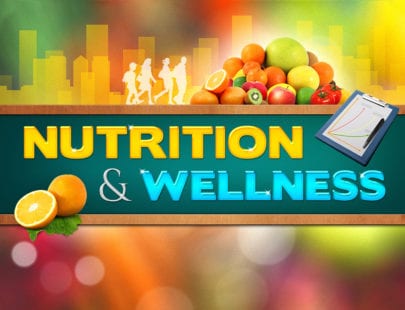
Early Childhood Education 1a: Introduction
Are you curious to see what it takes to educate and nurture early learners? Use your curiosity to explore the fundamentals of childcare, like nutrition and safety, but also the complex relationships caregivers have with parents and their children. Examine the various life stages of child development and the best educational practices to enrich their minds while thinking about a possible future as a childcare provider!
Units at a Glance
Unit 1: Childcare Roles and Obligations
Understanding the differing roles and responsibilities of parents and caregivers is essential for students considering a career in child care. Both parents and childcare providers provide love and nurturing and model appropriate behavior for children. Parents and caregivers work as a team, with the parent as the primary authority and the caregiver as an essential support to the parent. Caregivers have a responsibility to maintain an environment that is safe, healthy, and respectful for the children in their care.
What will you learn in this unit?
- Explain why early childhood education matters.
- Describe different types of families and parenting arrangements.
- Describe the legal responsibilities of parenthood.
- Discuss the moral or ethical responsibilities of parenthood.
- Describe the basic responsibilities of childcare providers.
- Explain how culture and diversity impact the childcare environment.
Unit 2: A Clean, Safe and Healthy Childcare Environment
Childcare homes and facilities, regardless of size, have a responsibility to provide a clean and safe environment for children in their care. Understanding cleanliness standards and child safety is essential for all childcare providers, whether employees or owners. Appropriate hygiene in the childcare environment will reduce illness, prevent pests, and keep children healthy. Child proofing and other child-safety measures reduce risks for children in care. Together, these measures create a clean, safe, and healthy environment for both children and caregivers.
What will you learn in this unit?
- Demonstrate how to sanitize and disinfect the childcare environment.
- Demonstrate proper hand-washing technique and practices.
- Describe safe infant sleep habits.
- Describe appropriate security for the childcare home or center.
Unit 3: Food and Nutrition
Children in care typically consume a significant portion of their daily food at the childcare center or facility. Many children eat breakfast, lunch, and snacks away from home. Providing healthy, tasty meals is an essential part of caring for children, from infants through school-age kids. Good nutrition provides children with a healthy start in life that will remain with them throughout their lives.
What will you learn in this unit?
- Describe and explain the USDA and state requirements for meals in a childcare facility.
- Explain what is required for participation in the Child and Adult Food Care Program.
- Explain how to plan meals and menus for children.
- Describe positive mealtime strategies.
Unit 4: Rules and Regulations
Laws regulate the standards and operation of childcare facilities. These laws cover both small and large childcare facilities and providers, including small-scale registered childcare homes, somewhat larger licensed childcare homes, and fully staffed childcare centers. Understanding the laws controlling childcare facilities is essential for any potential childcare provider.
What will you learn in this unit?
- Describe the types of childcare facilities.
- Explain how childcare facilities are regulated.
- Describe the rules that apply to childcare facilities.
- Describe the signs and symptoms of child abuse.
- Explain how to speak to a child disclosing abuse.
Unit 5: Pregnancy and Childbirth
Many of the families that you work with may be experiencing pregnancy and childbirth as you care for their children. As a childcare provider, studying the dynamics surrounding pregnancy and childbirth will help you relate to families and develop an understanding of early child development as well.
What will you learn in this unit?
- Describe the signs and stages of pregnancy
- Explain the characteristics of each trimester of pregnancy
- Discuss best practices for a healthy pregnancy and how prenatal medical care commonly proceeds
- Analyze the stages of birth from onset of contractions to delivery of the placenta
- Consider the benefits of breastfeeding
Unit 6: Early Childhood Development
Understanding child development enables the childcare provider to maintain appropriate expectations regarding skills and behavior for children from infancy through the early school years. A thorough understanding of typical child development also allows the provider to recognize developmental delays and serve as an essential part of the care team for special needs children.
What will you learn in this unit?
- Define and discuss physical, cognitive, language, and social development.
- Describe the typical stages of development from infancy through the school years.
- Describe how to recognize typical developmental milestones.
- Explain when to talk to parents about possible developmental delays.
Unit 7: Special Needs and Inclusivity
It is important for early childhood professionals to understand not just typical child development but also the needs of children with disabilities. From birth to school-age, all children need affection, stimulation, attention, and care—and they all want to have fun! This is no different for children with special needs; they just often need some assistance to participate in activities happily and safely. In this unit, we’ll explore the evolution of special education as a whole, with a focus on inclusive classrooms, and walk through some of the most prominent special needs you may encounter when working as an early childhood educator.
What will you learn in this unit?
- Review the history of and landmark turning points in special education
- Discuss how disabilities like Down syndrome and cleft palate affect infants’ needs
- Describe how toddlers cope with disabilities like autism or muscular dystrophy
- Explain the way inclusive classrooms function for pre-school and school-aged children
Unit 8: Spotlight on Administration: Setting Up Your Childcare Program
There are many roles to fill in the early childhood sector, but none of these jobs would exist without the hard work of entrepreneurs who start businesses and create jobs. Making the transition from early childhood educator to business owner will require you to consider some the legal, financial, and logistic aspects of running a business. You may not feel you’re ready for this yet, so we’ll start by walking through a day in the life of a business owner. Along the way, you’ll grow in responsibility and business know-how, learning to attract your ideal customers to book your special services, and grow your business through various stages of development.
What will you learn in this unit?
- Understand the daily life and responsibilities of an early childhood entrepreneur
- Decide on a legal business structure that meets your needs
- Plan for business finances, including budgets, expenses, and taxes
- Discuss how marketing, advertising, and sales generate income for a business
- Discern growth strategies to increase business revenue
Required Materials
- Computer with internet access
- Word processing program of your choice
- Paper to write on and writing utensil (optional)
- Digital design tool like Canva (optional)
- Video recording equipment (a cell phone camera works)
- Five materials of differing textures and colors
- One should be some sort of cloth-type material (think of something you might find in a fabric store).
- One item should be able to be mobile, meaning a student should be able to take what is in a container to another class to use as a sensory device when needed.
- Separate containers for all items (or ability to separate items in some way without the use of containers so that students can access each material individually)
Note: students should choose one of the bullet points below; either digital or analog options.
- Online tools like Google Slides, Google Docs, Canva, etc, a desktop program like Microsoft PowerPoint or Word
- Poster board



